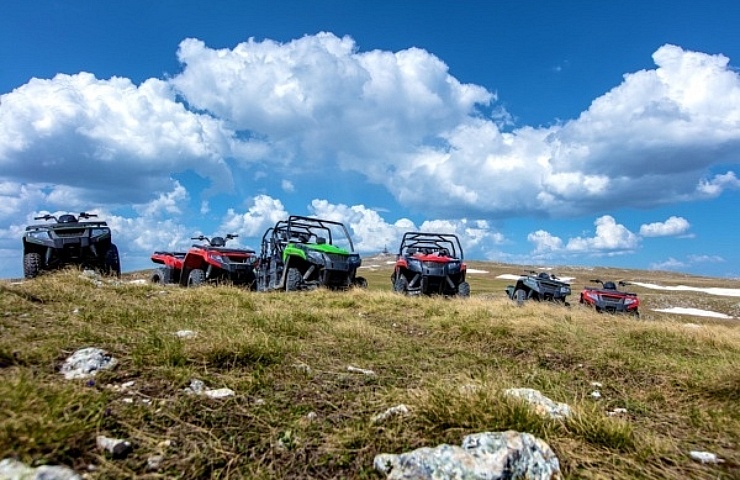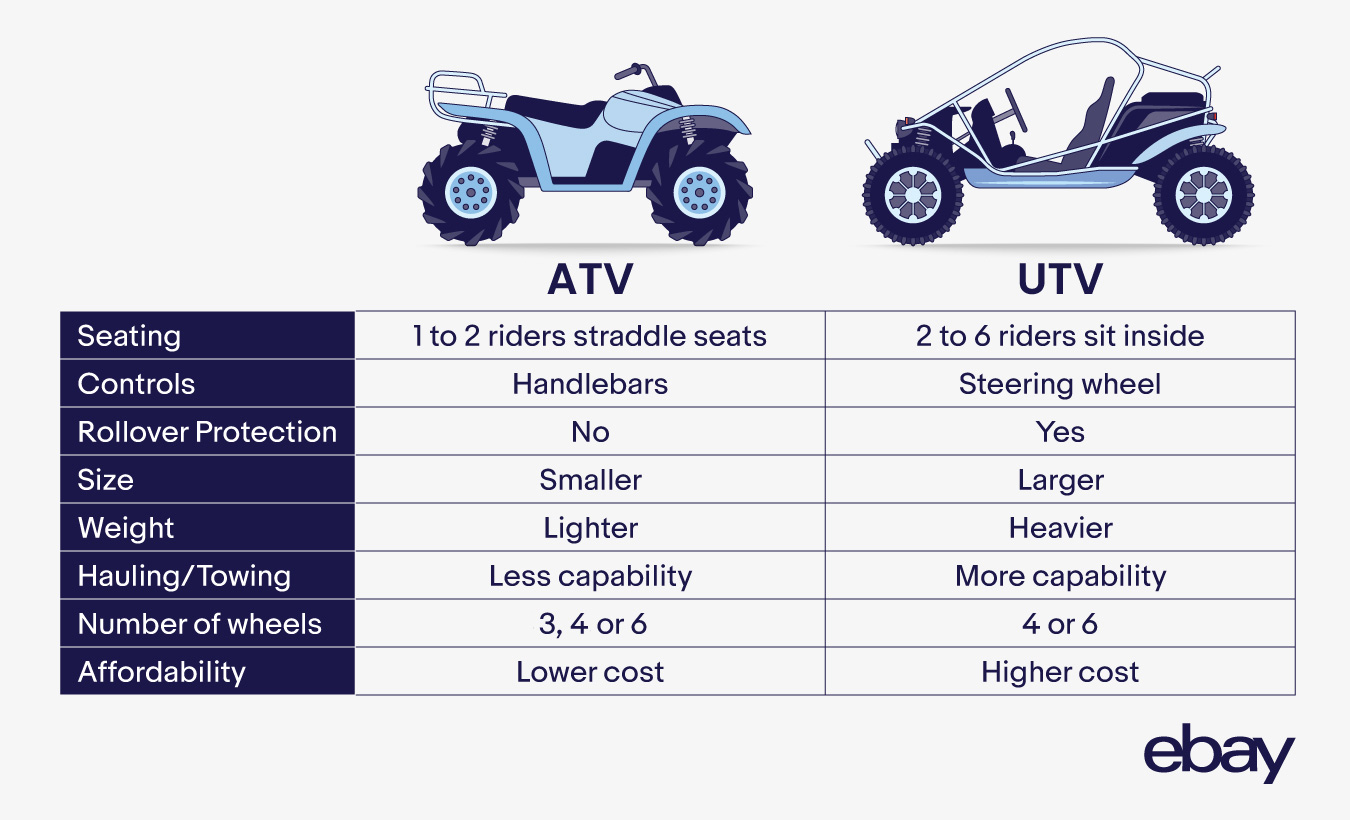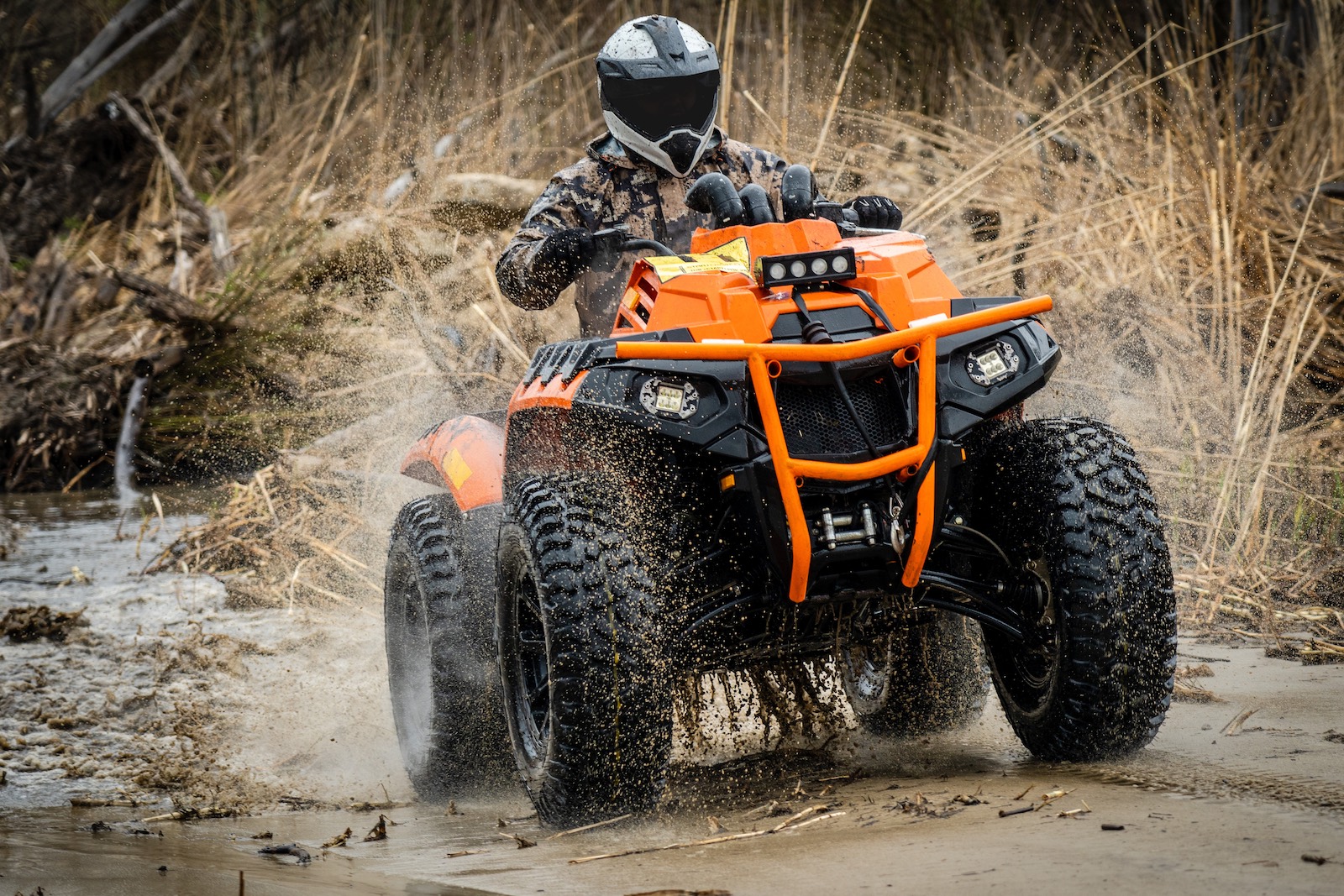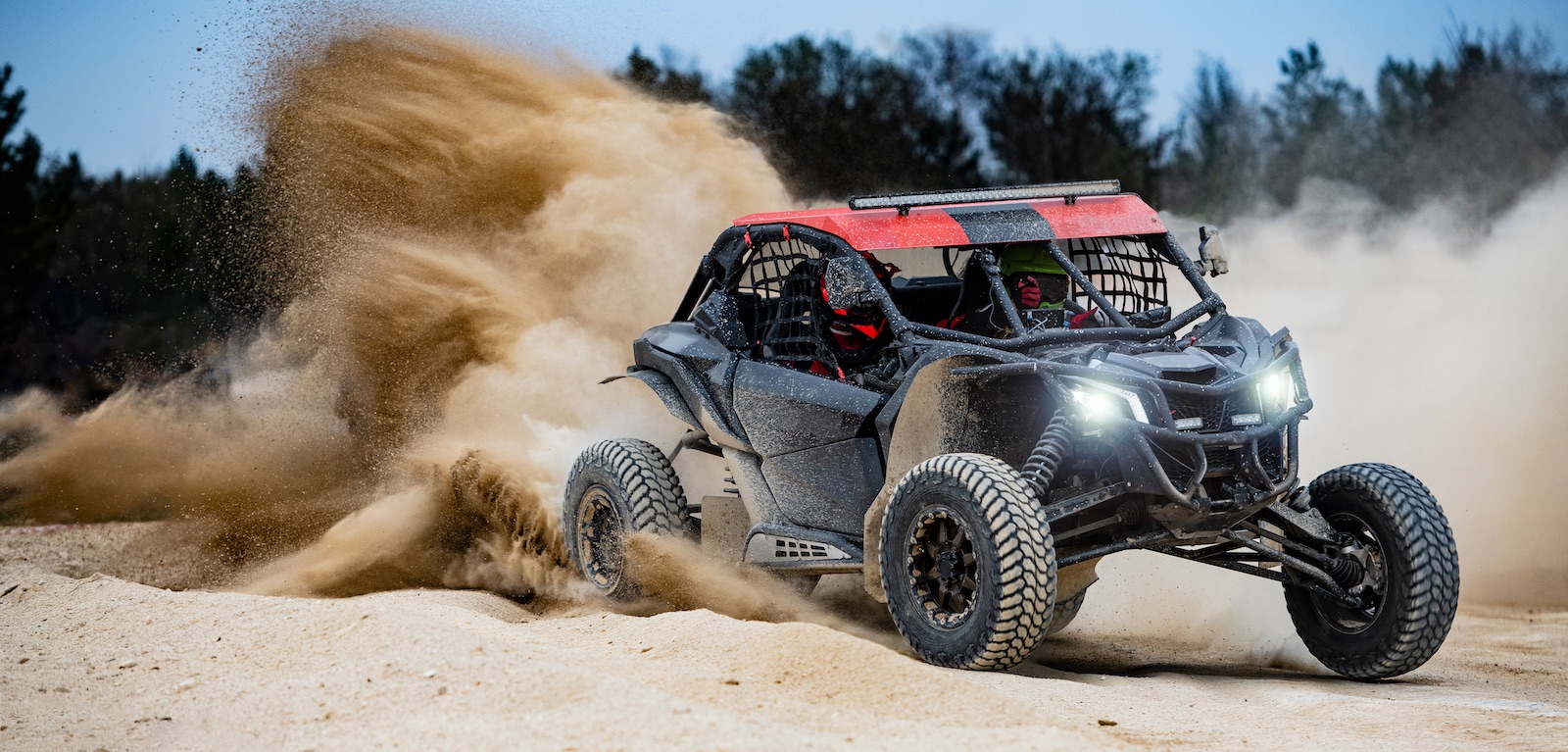ATV and UTV: Differences Explained
Both UTV and ATV have four wheels and are designed to operate off-road in both utility and sport/recreation applications. Where they differ is in seating configuration and controls. The rider straddles an ATV and operates it with a handlebar. In a UTV, the driver sits side-by-side with a passenger and operates it with a steering wheel and foot controls, much like a car.
ATVs and UTVs are both hardworking conveyances useful to have on a ranch, farm, campus, golf course, or job site. They can be used to transport cargo, tools, materials, and people over a range of outdoor terrain. But depending on the desired utility, one may be better suited to the task than the other.
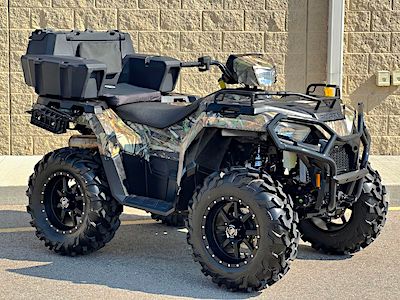
2021 Polaris Sportsman 570 Hunt Edition ATV
An ATV does not secure the rider to the vehicle. Rather than staying locked into place, the rider moves around a lot while riding, using their body to counterbalance the ATV. Riders must use their arms, legs, and body weight to assist the machine’s handling through cornering, jumping, or absorbing bumps in the trail.
In a sharp left turn, for instance, riders must hang their bodyweight inside the turn, to the left of the ATV, in order to keep the inside wheels on the ground. ATVs usually are much lighter than UTVs, so bodyweight and rider movement play a large role in handling performance.
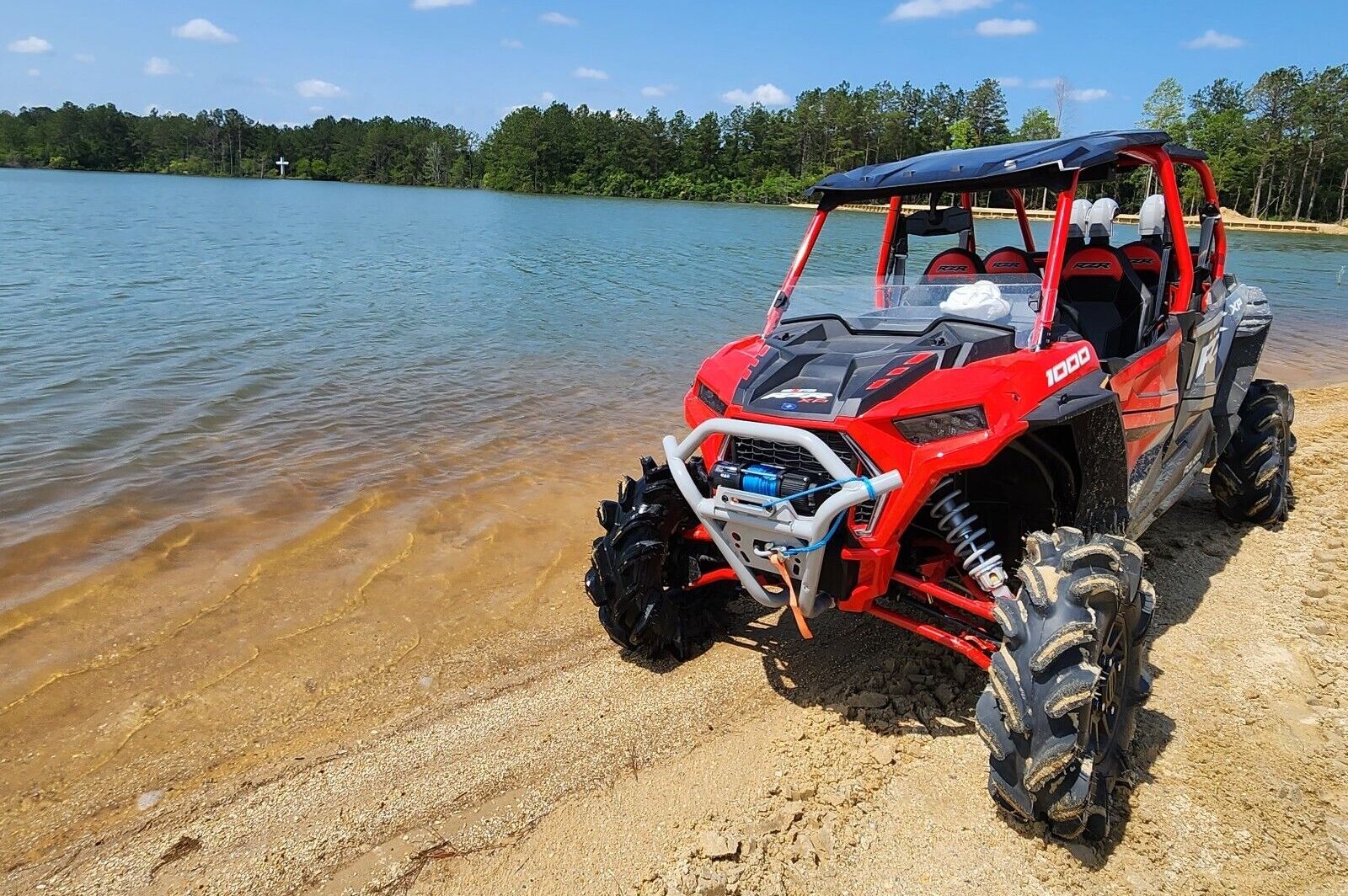
2022 Polaris RZR 1000 XP Highlifter UTV
On the other hand, UTVs feature a roll-over protective structure (ROPS), and the driver and passengers wear seat belts. Some UTVs also have doors, roofs, and windshields. Competition UTVs feature ergonomic bucket-style seats to help keep the driver and passenger secure and protected during aggressive driving.
Four- and five-point harnesses are also common, especially in racing and competitions like rock crawling. UTVs are designed to keep bodies inside and locked in place, with arms and legs protected from flailing outside the vehicle.
Pros and Cons of an ATV
An ATV is an agile machine ideal for a single rider. It requires full gear (helmets, goggles, boots, and gloves, plus knee and elbow protection) and is more physically demanding to operate. Without an ROPS, the ATV rider is more exposed to the elements and more vulnerable to being swiped by a branch, splashed by mud, or sunburned.
With its lightweight design and large wheels, an ATV runs on low tire pressure and can therefore maintain a firm grip on the ground while spreading its weight out over a larger area. This allows it to crawl over uneven terrain easily.
Shop now for ATVsA utility-oriented ATV is commonly used for fishing, hunting, or camping. Both an ATV and UTV can excel at conquering 4×4 trails, but an ATV can go beyond onto narrower trails and into more remote areas. Its smaller size also means it can maneuver through tight areas, such as in and out of barns or through corridors. Smaller size also means less hauling capacity. Front and rear racks allow room for light cargo, though it won’t easily move materials such as gravel or dirt.
ATV Pros:
- Smaller, lighter design is ideal for a single rider
- Large low-pressure tires float over terrain with minimal disturbance
- Agile in smaller spaces and rugged terrain
- There is some towing capacity
- Easy to transport (can commonly fit in a truck bed)
- Relatively affordable
ATV Cons:
- Passengers are less comfortable
- More physically demanding to operate than UTVs
- Less room for cargo and storage
Pros and Cons of an UTV
When it comes to transporting people or goods, it’s hard to beat a UTV. With up to two rows of side-by-side seating up to three across, UTVs can accommodate up to six people. Passengers are more protected as they are secured by a seatbelt inside the vehicle, often with closed doors and ROPS.
The versatility of modern UTVs is also compelling. Many have a rear cargo box with a dump bed, some hydraulically operated. Some UTVs also offer convertible beds that can fold up for second-row seating. UTVs are the masters of hauling materials and are often sought out for this reason alone. UTVs can even be converted into snow plows with accessory kits and full-cabin enclosures to keep the operator protected in wintery conditions.
Shop now for UTVsEven loaded up with people and gear, many UTVs can conquer 4×4 trails with ease. Some specialize in traversing mud, while others have enough power and suspension capability to double as recreation UTVs. Its larger size, of course, means a tradeoff in agility. This could limit the kinds of trails you can access, and you’ll also need to consider transportation and storage options. There are sizing options, but take note of your trailer and garage capacities before choosing a UTV.
UTV Pros:
- More room for transporting people
- More comfortable for all-day use
- Less physically demanding to operate
- Wider wheelbase for better stability
- More cargo room and towing capacity
- Versatility—some can convert second-row seating to a cargo bed
UTV Cons:
- Limited trail access due to larger size
- More challenging to transport and store
- More expensive than ATVs
Which One Is Best for You?
Cost is a major factor, as the smaller, lighter ATVs are generally less expensive to own and maintain than a larger UTV. Shopping used is an excellent place to start. eBay has a wide selection.
Both the ATV and UTV are capable of putting a wide grin on your face. The challenges of learning how the vehicle operates and mastering the terrain—and the hours of fun to be had off-road—are immeasurable.
Shop now for ATVs
